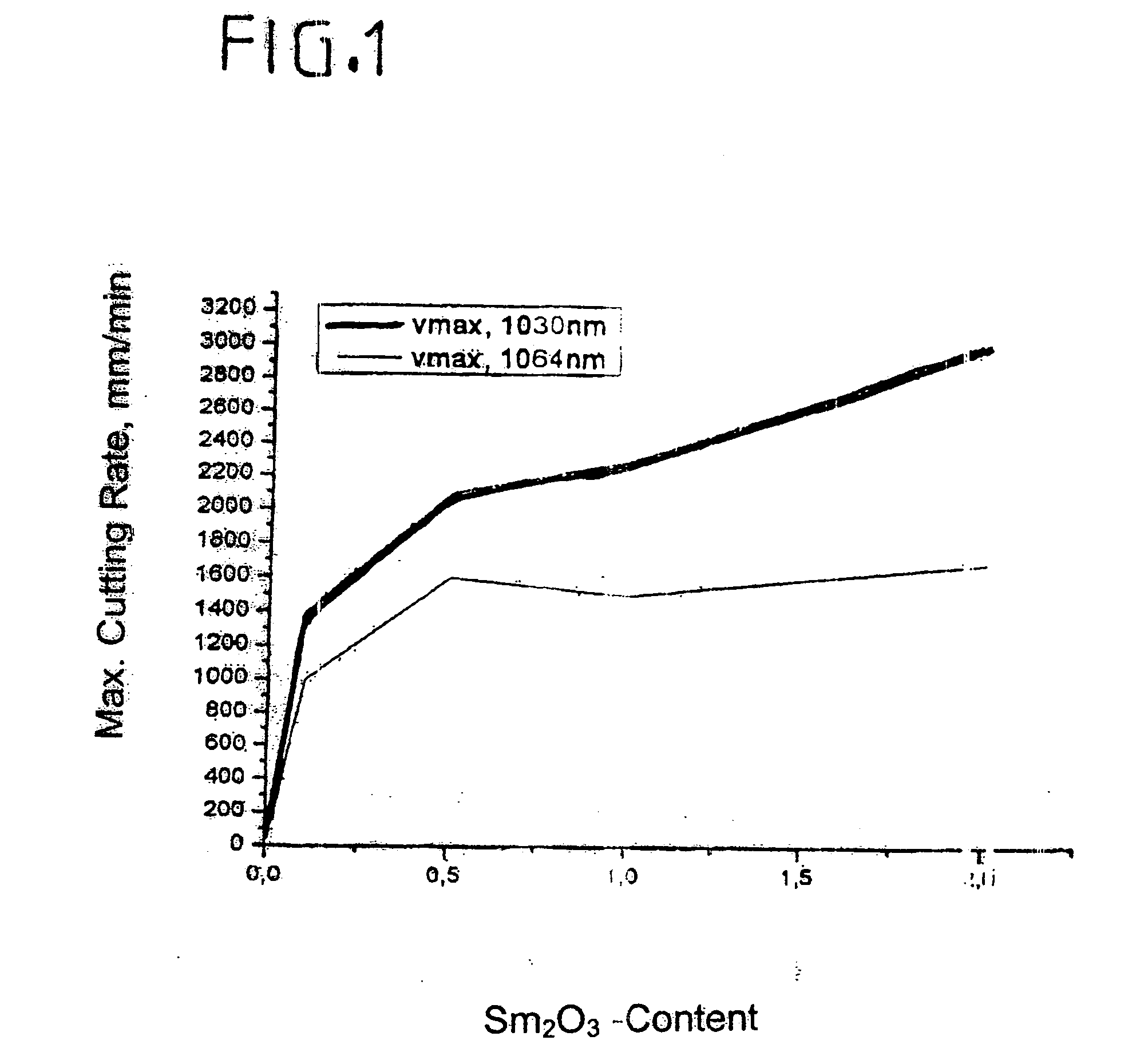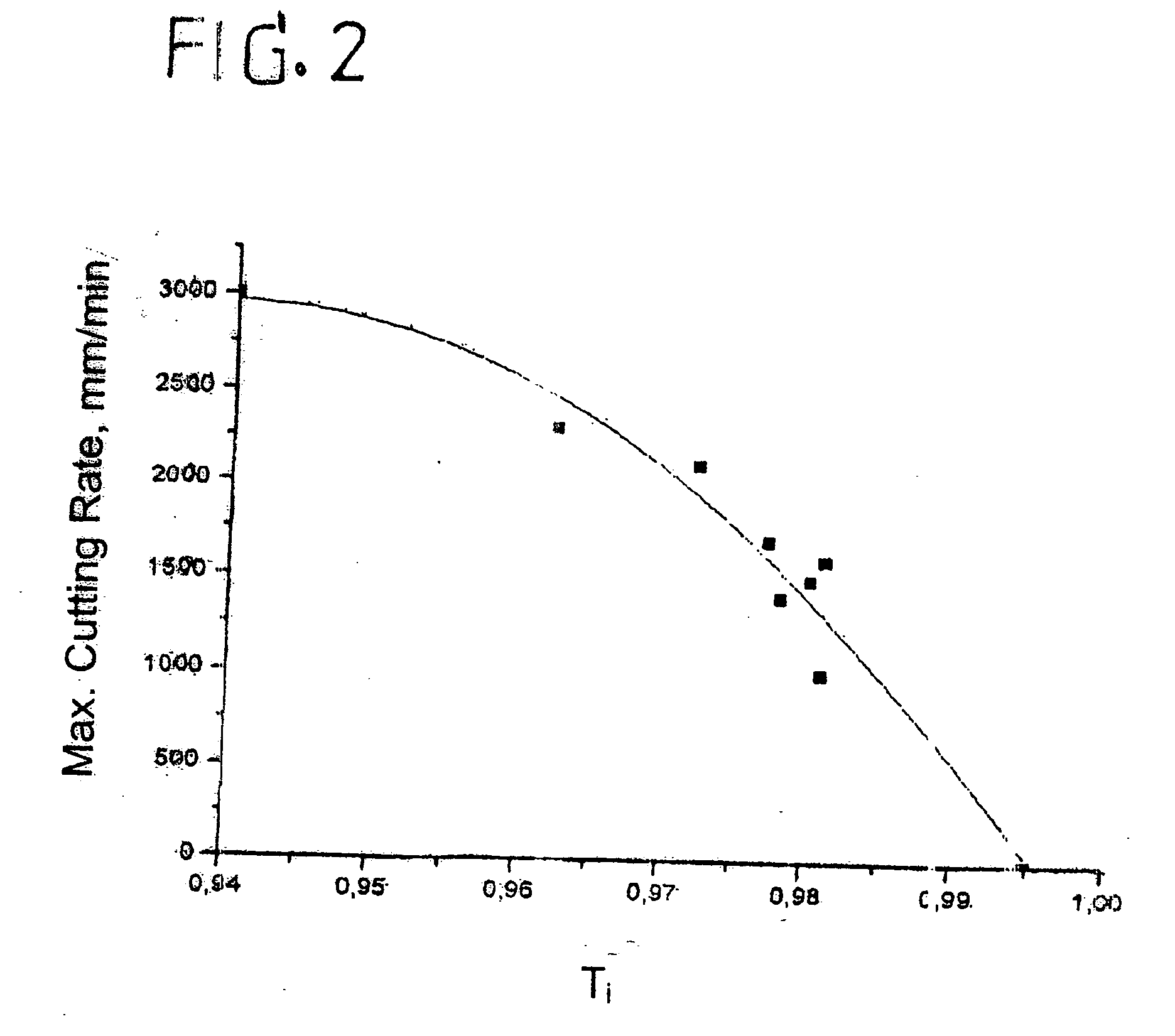Thin flat glass for display purposes and method of cutting the thin flat glass into display sheets
a technology of thin flat glass and display, applied in the field of thin flat glass, can solve the problems of reduced mechanical structural strength or mechanical stress, increased danger of breaking the cut structure, and cracking of the glass sheet at the desired position, and achieve the effect of rapid heating and rapid cutting
- Summary
- Abstract
- Description
- Claims
- Application Information
AI Technical Summary
Benefits of technology
Problems solved by technology
Method used
Image
Examples
Embodiment Construction
[0027] The borosilicate glasses were made by melting the raw materials with the compositions listed in Table I at a temperature of 1620° C. in a gas-fired quartz vessel for 120 minutes. The commercially obtained raw materials had the compositions listed in Table I, and were essentially alkali metal free apart from the inevitably present impurities. The melt was refined for 90 minutes at the temperature of 1620° C. and then poured into an inductively heated platinum crucible or vessel. The melt was stirred for 45 minutes at 1520° C. in order to homogenize it The poured glass block was cooled at 730° C. at a rate of 20° C. / min.
TABLE IFLAT GLASS COMPOSITIONS AND PROPERTIESExample 1Example 2Example 3Example 4SiO261.1560.1560.1560.15B2O39.759.759.759.75Al2O314.9014.9014.9014.90MgO2.802.802.802.80CaO5.005.005.005.00BaO3.203.203.203.20TiO22.001.501.501.00CeO2—0.50—0.50MoO3——0.500.50Sm2O31.00—2.001.00Yb2O32.001.00SnO20.200.200.200.20L*96.596.596.396.4a*−0.1−0.1−0.1−0.2b*0.70.81.11.1C* (Ch...
PUM
| Property | Measurement | Unit |
|---|---|---|
| thickness | aaaaa | aaaaa |
| wavelength | aaaaa | aaaaa |
| thicknesses | aaaaa | aaaaa |
Abstract
Description
Claims
Application Information
 Login to View More
Login to View More - R&D
- Intellectual Property
- Life Sciences
- Materials
- Tech Scout
- Unparalleled Data Quality
- Higher Quality Content
- 60% Fewer Hallucinations
Browse by: Latest US Patents, China's latest patents, Technical Efficacy Thesaurus, Application Domain, Technology Topic, Popular Technical Reports.
© 2025 PatSnap. All rights reserved.Legal|Privacy policy|Modern Slavery Act Transparency Statement|Sitemap|About US| Contact US: help@patsnap.com



